In the lexicon of rock ‘n roll, there’s a term called a riff. The dictionary on my laptop describes it as, “a short repeated phrase, frequently played over changing chords or harmonies or used as a background to a solo improvisation.” I don’t have a musical bone in my body, but I’m going to imitate the guitar heroes of my youth and riff on a single word. Vision.
One of the things that sets the best fly fishermen apart from their less successful brethren is vision. Not so much visual acuity (although I’ll touch on that later), but vision with a small “v” - the ability to see and understand what’s happening on, and around, the water.
Vision, at least in this context, is interchangeable with words like “information” and “understanding.” You see something or, more likely, some complex combination of things, and you become acutely aware of what you’re witnessing. Just as importantly, you know what to do next. The rise forms are subtle and the mayflies are lying flat on the surface, so you reach for your 6x tippet and a little rusty spinner. The wind is pushing waves against a rocky point on your favorite bass lake, so you cast your Clouser Minnow right to the edge of the drop-off. The eddy behind the mid-stream boulder is sunny and shallow, while the small cushion in front is deep and shaded. Where’s that big rainbow likely to be holding? In front of the rock, of course ...
This aspect of vision is all about seeing and reacting. Most of the time our reactions are dictated by personal experience. On other occasions, when we don’t have enough empirical data to draw on, we rely on logic or intuition or the memory of something we read in a magazine or heard from a fishing buddy. But it’s all predicated on our ability to see and respond.
You can train yourself to do this, of course. The most effective way I’ve found is by asking two simple questions. The first is “What am I seeing?” Really, that’s it. “What am I seeing?” Let’s say we’re on a trout stream. What’s going on? Is the water high or low, fast or slow, dirty or clear? Is it windy? Is the sun way up in the sky or down low on the horizon? Is it cloudy, or raining, or snowing? Does the weather look like it’s about to change? Are there bugs? If so, which ones? Are there fish rising? If not, are there trout visible in the water? Where are the holding lies and the feeding lies? Are there trees or bushes shading the water?
“What” - with no rush and no hurry and no sense of expectation - “am I seeing?” At this point, we’re simply huge receptors, soaking in as much information as we possibly can.
Then there’s our second question, the one where we focus on our experiential, empirical foundation. “What is this telling me?” Or, along those same lines, “What is this showing me?” Because a cool, cloudy afternoon with a good Baetis hatch usually adds up to a different fly and a different approach than a sunny, breezy day with no bugs at all. Likewise, a runoff-swollen mountain stream with patches of snow on the banks calls for a different strategy than a meandering spring creek. Here’s where we dig into our memories, searching for similar situations, considering past successes and long-ago failures, all so we can come up with a sensible game plan for the situation we’re facing at this particular moment.
This aspect of vision truly separates expert anglers from everyone else. Perhaps the best on-the-water advice I ever received was to put my rod aside, plop my butt down on the bank and take the time to figure out what’s really going on in front of me. It’s the most effective way I know to come up with a winning game plan.
As I mentioned earlier, another facet of vision is visual acuity; the ability to see things clearly. The human eye is a marvelous and sensitive device, but it does have its limitations. For example, since it’s not particularly well-suited to the kind of extreme glare that fly fishermen run into on a regular basis, it does a poor job of gleaning information from beneath the water’s surface.
If you're a regular reader here, you know we spend a great deal of time talking about eyewear for the water, but it bears restating: a great pair of polarized sunglasses - I’ve been using Costa’s Wingman Frames with their 580G Copper lenses for the last few years (or you can check our Best Fishing Sunglasses of 2013 feature) - is absolutely essential. Polarized glasses will moderate excess light, cut through glare and make it far easier to spot fish in the water column. They’ll also protect your eyes from damaging UV rays and wayward hooks. If you want to maximize your success and minimize your on-stream aggravation, high-quality sunglasses are a must.
Speaking of on-stream aggravation, I’ve finally reached the point where my up-close eyesight is really starting to deteriorate. I just can’t see well enough to thread the hook on smaller flies; especially when the light starts to fade in the evening. This relatively recent development is frustrating as hell, but a Hat Eyes™ magnifier offers an elegant solution.
The magnifier has a stainless steel clip which attaches to the bill of my fishing cap. When I want to switch to a size 18 caddis half an hour before dark, I just flip down the rectangular magnifying lens and thread the hook like a pro. No fumbling for reading glasses, no peering through bifocals. My eyes may be slipping, but as long as I have a good magnifier, I can still get the job done.
There’s one final aspect of vision I’d like to explore, and that’s Vision with a capital “V.” We’re not talking sunglasses now, or reading the water, but rather an awareness of, and focus on, the future. In other words, what kind of legacy are we leaving our kids and our grandkids?
This element of vision has its roots in personal responsibility and stewardship. The old Kashmiri proverb tells us that we have not inherited the world from our forefathers, we’ve borrowed it from our children. The Iroquois ask us to consider the impact of our decisions on the next seven generations. Teddy Roosevelt spoke up time and again about conservation, and about our responsibility to future generations.
Let’s be honest. Most of us are blessed. As fly fishermen, we’ve experienced passion, beauty and joy on the water. With that in mind, what’s more natural, or more important, than passing along those same gifts to our kids and our grandkids? Shouldn’t we be standing up for our resources, and for our future?
Perhaps big-V Vision translates into joining Trout Unlimited or supporting Conservation Hawks. Maybe it means fishing with our friends and family members, and teaching them about the outdoors. Perhaps it’s voting for the guy or gal who promises to safeguard our rivers and lakes. But whatever form it takes, let’s do everything we can to protect the landscapes we love and the places we fish. It’s the least we can do for those destined to follow in our footsteps.



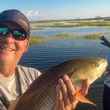
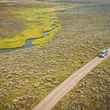
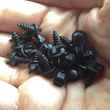
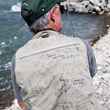


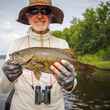




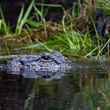

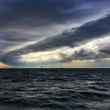
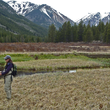

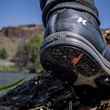
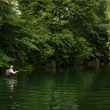
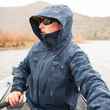
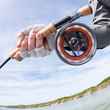


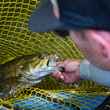
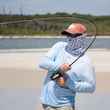
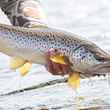
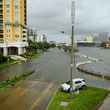
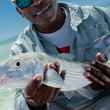
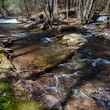
Comments
PoconoTrout replied on Permalink
There really is no overstating the sunglasses bit. I went flats fishing with a guy earlier this year and noticed him fishing without his sunglasses. Wondering how he could see, I asked him if he was crazy. Turned out he was fishing with some "name brand" sunglasses that weren't even polarized, severely dark and just generally shitty.
Don't skimp on your sunglasses. You can't catch what you can't see.
ginkthefly replied on Permalink
It isn't the easiest thing to do, but I've found that my success is greatly increased if -- upon arriving at a new stretch of water -- I simply sit an observe for 5-10 minutes before fishing. You'd be surprised how often the approach I assumed I would take ends up being cast aside for an alternative because of something I've observed during that initial period.
Patience.
Pages